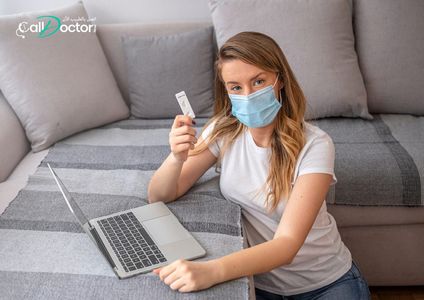How Remote Testing Is Changing the Way We Approach Preventive Healthcare
 Mark Wood
21 Sep, 2025
11 mins read
23
Mark Wood
21 Sep, 2025
11 mins read
23

Preventive healthcare has always been the cornerstone of a healthier population. The idea is simple: detect risks early, address them promptly, and empower individuals to take control of their well-being before minor concerns escalate into serious medical conditions. For decades, preventive care relied heavily on physical visits to clinics, hospitals, or diagnostic centers. However, in recent years, one development has dramatically shifted this paradigm—the rise of remote testing.
Remote testing, which allows individuals to conduct medical tests from the comfort of their homes, is revolutionizing the way we understand and practice preventive healthcare. This transformation isn’t just about convenience; it represents a fundamental change in accessibility, patient empowerment, and public health outcomes.
The Traditional Model of Preventive Healthcare
Traditionally, preventive healthcare has been anchored in routine check-ups, screenings, and diagnostic tests performed at medical facilities. People were encouraged to undergo annual physical exams, blood work, or screenings for conditions such as diabetes, hypertension, and high cholesterol. While effective in theory, this model faced challenges:
- Accessibility Issues: Rural populations or those with mobility difficulties often found it hard to access testing facilities.
- Time Constraints: Busy schedules discouraged people from visiting clinics for preventive screenings.
- Cost Concerns: Even when insurance covered some expenses, out-of-pocket costs for tests could deter individuals.
- Awareness Gaps: Many individuals lacked awareness of the importance of regular check-ups, delaying preventive action until symptoms became noticeable.
The result? Preventive healthcare was often reactive rather than proactive, with many people only seeking medical attention once problems became severe.
The Emergence of Remote Testing
Remote testing emerged as a response to these challenges. Enabled by digital health technologies, at-home testing kits, telemedicine platforms, and wearable devices, remote testing is democratizing access to preventive healthcare. Today, individuals can test for a wide range of conditions without leaving their homes, from cholesterol levels to food sensitivities and even infectious diseases.
This shift began gaining traction in the last decade but accelerated dramatically during the global pandemic. The urgent need to minimize in-person contact while still monitoring health conditions pushed the development of accurate, user-friendly remote testing solutions. Now, what was once a niche offering has become a mainstream tool for preventive care.
How Remote Testing Enhances Preventive Healthcare
1. Increased Accessibility
Remote testing reduces the barriers to healthcare access. Whether you live in a rural village, lack reliable transportation, or are homebound due to disability, testing no longer requires travel. By sending kits to patients or allowing data collection through devices at home, healthcare systems extend their reach to populations that were previously underserved.
2. Greater Patient Engagement
When individuals can easily test themselves, they become more engaged in their health journey. Instead of relying solely on annual doctor visits, patients can monitor their biomarkers more frequently and take proactive steps toward lifestyle changes or medical consultations when something looks concerning.
3. Timely Detection of Health Risks
Preventive care is all about early detection. Remote testing makes it easier for individuals to test more often, thereby identifying issues earlier than traditional models allowed. For instance, a person with a family history of diabetes can perform regular glucose monitoring at home, helping them make dietary and lifestyle changes before developing the condition.
4. Reduced Healthcare Costs
By catching health issues early, remote testing helps reduce the need for expensive treatments down the road. Early intervention is almost always more affordable than managing advanced illnesses. Moreover, at-home tests can often be less expensive than lab-based tests, offering additional savings to patients.
5. Integration with Telehealth
Remote testing integrates seamlessly with telemedicine services. Results from at-home tests can be shared instantly with healthcare providers through digital platforms, enabling real-time consultations and treatment adjustments. This ecosystem creates a continuous cycle of monitoring, advice, and intervention without requiring physical presence.
Popular Types of Remote Testing
Remote testing is expanding into almost every area of healthcare. Some of the most popular and widely used categories include:
- Infectious Disease Testing: At-home tests for influenza, COVID-19, and other infectious conditions allow rapid detection and containment. A good example is the availability of a pcr test at home, which became crucial during the pandemic to prevent the spread of the virus while giving individuals quick, reliable results.
- Genetic and Ancestry Testing: People can now explore their genetic predispositions to diseases or uncover their family lineage through mail-in kits.
- Chronic Disease Monitoring: Tests for blood pressure, cholesterol, and glucose are increasingly available in at-home formats.
- Allergy and Sensitivity Testing: Kits that identify food intolerances or environmental sensitivities empower people to adapt their lifestyles accordingly.
- Wellness and Preventive Screening: From hormone levels to vitamin deficiencies, wellness-oriented tests help individuals optimize their daily health.
Challenges of Remote Testing
While remote testing offers undeniable benefits, it also presents challenges that must be addressed for it to become a universally reliable solution.
- Accuracy Concerns: Some critics argue that at-home tests may lack the precision of laboratory testing, especially when not administered correctly.
- Data Privacy Issues: With results often transmitted digitally, concerns around data protection and security are paramount.
- User Compliance: Some individuals may struggle to follow test instructions correctly, leading to inaccurate results.
- Limited Scope: Not all conditions can be effectively tested remotely. Complex diagnostic tests may still require in-person evaluations.
To address these challenges, companies are investing in clearer instructions, more user-friendly test kits, and enhanced digital security measures. Healthcare providers are also playing a role by educating patients on the proper use of at-home testing kits.
The Role of Technology in Scaling Remote Testing
The backbone of remote testing’s success lies in technology. Advanced sensors, artificial intelligence, machine learning, and digital health platforms are transforming raw test data into actionable insights. For example:
- Wearables track heart rate, oxygen levels, and sleep patterns, feeding this information directly into apps for health monitoring.
- AI Algorithms can flag abnormal results from at-home tests, prompting further medical consultation.
- Cloud Platforms allow real-time data sharing between patients and healthcare providers, facilitating faster decision-making.
This synergy between hardware and software is what makes remote testing not just possible but powerful.
Impact on Public Health
From a broader perspective, remote testing is reshaping public health in remarkable ways:
- Better Disease Surveillance: With more frequent and distributed testing, healthcare systems gain richer data on disease prevalence and trends.
- Reduced Hospital Burden: By decentralizing testing, hospitals and clinics are freed up to focus on critical cases.
- Health Equity: Populations previously marginalized due to geography, income, or mobility now have greater access to preventive care.
When preventive healthcare becomes more accessible, entire communities benefit through reduced disease spread, healthier populations, and more sustainable healthcare systems.
Looking Ahead: The Future of Preventive Healthcare
The future of preventive healthcare lies in personalization and decentralization. Remote testing will continue to evolve, offering more accurate, affordable, and diverse testing options. As adoption grows, healthcare systems will increasingly rely on hybrid models that combine at-home testing with in-person care for comprehensive coverage.
We can expect:
- Expanded Test Menus: Broader ranges of at-home tests will become available, covering everything from rare genetic conditions to advanced metabolic panels.
- Integration with AI-Powered Health Coaches: Virtual assistants may analyze results and recommend lifestyle changes automatically.
- Global Reach: Remote testing will expand into low-resource regions, bridging healthcare gaps on a global scale.
- Preventive Healthcare Ecosystems: Patients, providers, insurers, and technology companies will collaborate to build systems where preventive testing is routine and accessible for all.
Conclusion
Remote testing is not just a healthcare convenience—it is a transformative force in preventive medicine. By removing barriers to access, engaging patients more actively, and enabling earlier detection of health issues, it fundamentally changes how individuals and communities approach wellness.
While challenges remain, the trajectory is clear: remote testing is carving the path toward a healthier future, where preventive healthcare is no longer an occasional appointment but a daily practice seamlessly integrated into our lives.
Written By:
Mark Wood



Hotels at your convenience
Now choose your stay according to your preference. From finding a place for your dream destination or a mere weekend getaway to business accommodations or brief stay, we have got you covered. Explore hotels as per your mood.


